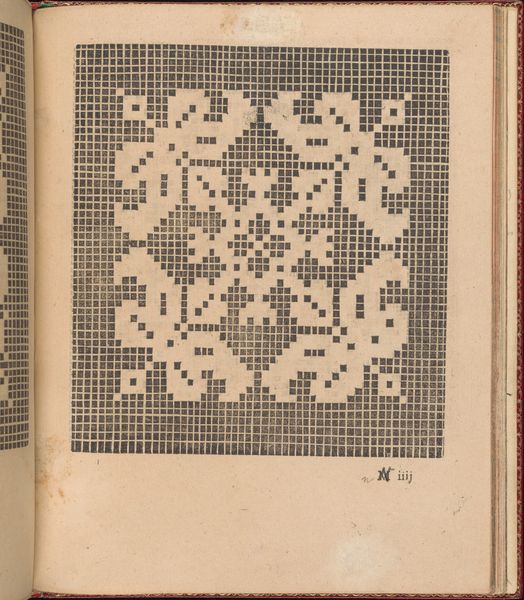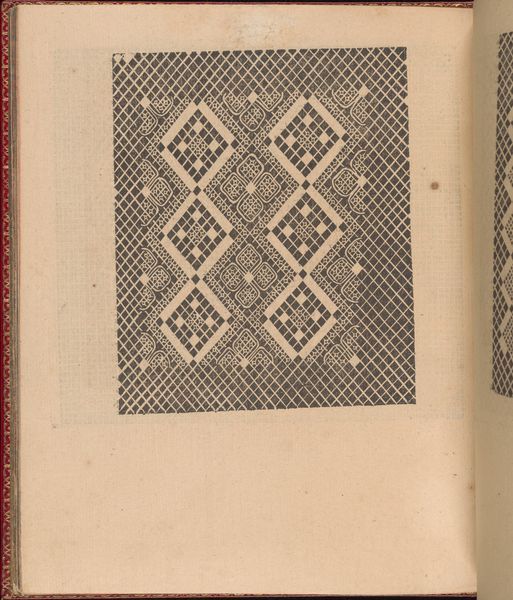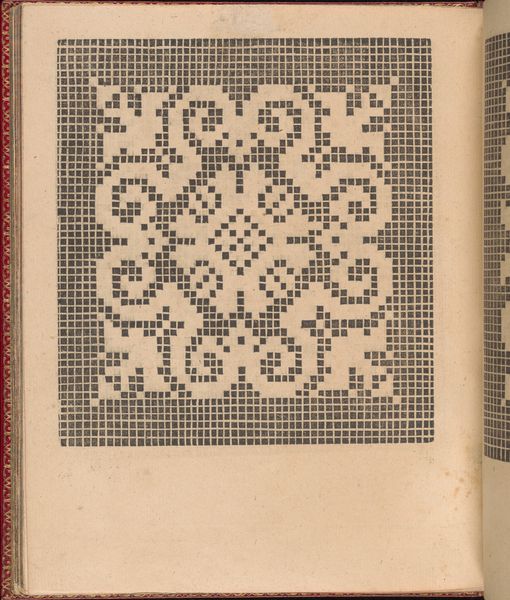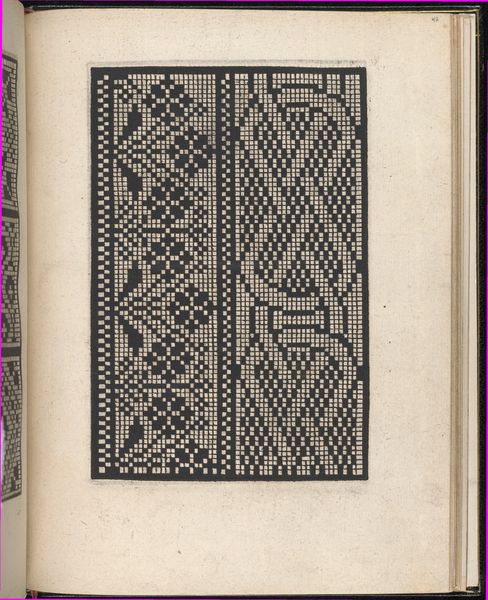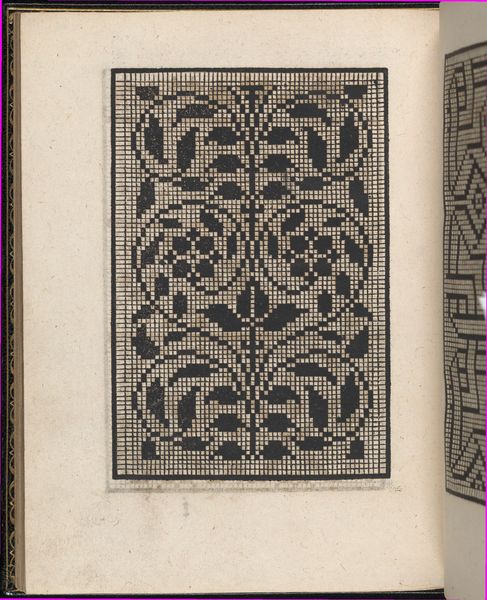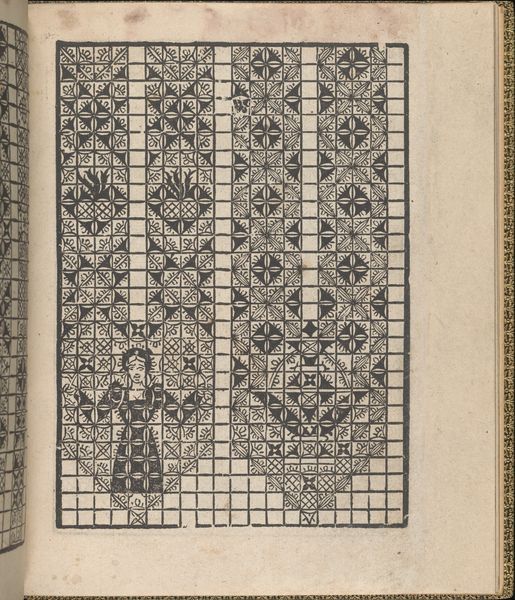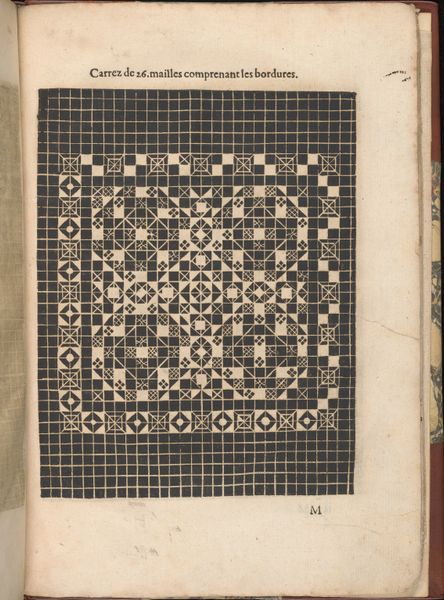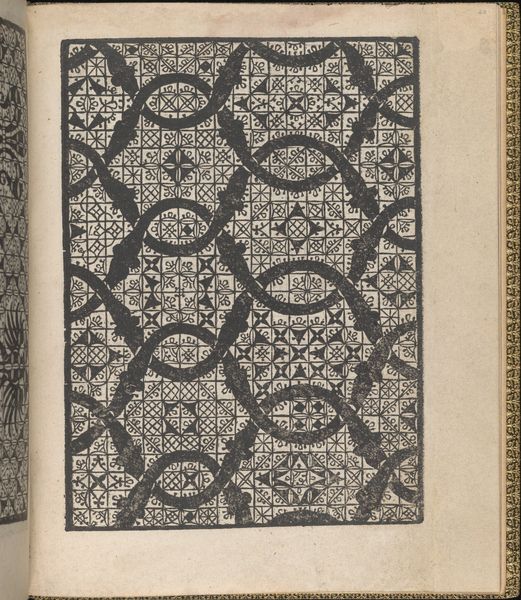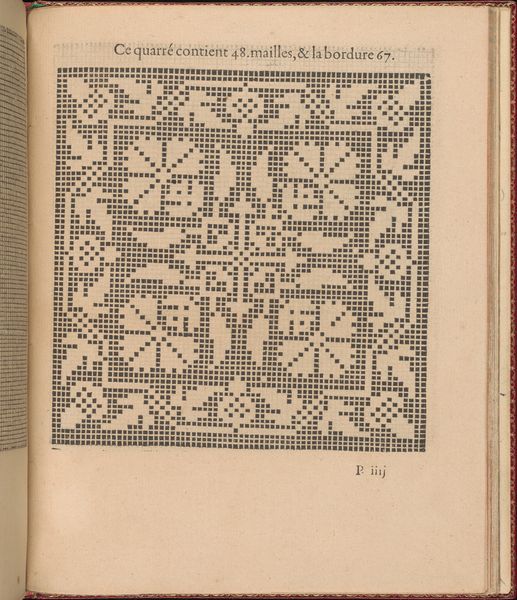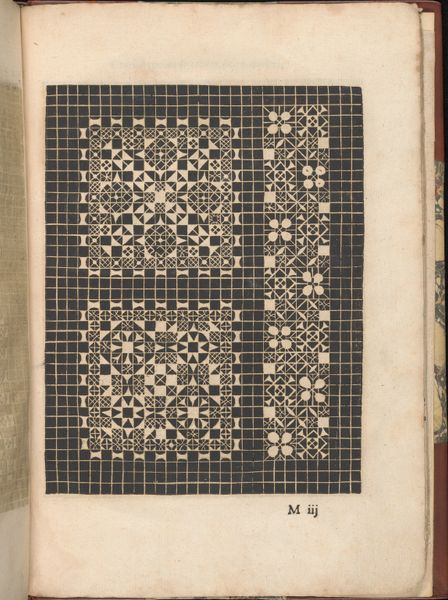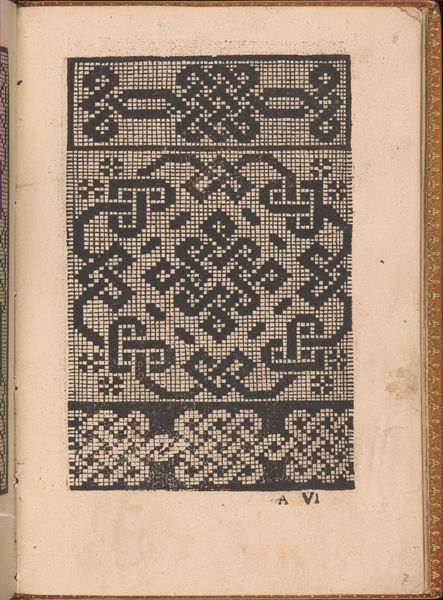
Les Singuliers et Nouveaux Portraicts... page 53 (verso) 1588
0:00
0:00
# print
#
book
#
geometric
Dimensions: Overall: 8 1/16 x 6 5/16 in. (20.5 x 16 cm)
Copyright: Public Domain
Curator: This intriguing print comes from Federico de Vinciolo's "Les Singuliers et Nouveaux Portraicts…," printed in 1588. Editor: Wow, look at that grid. It's like a minimalist maze. Very architectural in its stark geometry. Curator: Exactly. These books, pattern books specifically, functioned as instruction manuals of sorts. This was from an era where lacemaking and needlework were highly valued skills, especially for women. This design likely served as a guide, or source, for new creations. Editor: Yes, there is an almost digital quality to the black and white. So precise! The grid structure itself offers endless possibilities for variations. I see how someone could get lost in manipulating these basic forms into increasingly complex designs. The square patterns become symbolic units of something greater. Curator: Indeed. The symbolism lies not only in the shapes but in the act of creation itself. Lacemaking and needlepoint represented diligence, patience, and resourcefulness. These designs spoke to larger values: a society that saw craft as a vital part of daily life, reinforcing status and signaling specific identities. Editor: So, the five large geometric figures are the emotional heart of the pattern. Almost anthropomorphic somehow. If the pattern around them signifies potentiality, they’ve risen out of that background grid, resolved from possibility into material form. Curator: And they’re grounded in their context; the geometric repetition mirrors that era's deep concern for order and balance, a way of structuring one's existence, where every single stitch or crossing, no matter how small, helps constitute an artwork. Editor: It makes you think about the interplay between intention and accident too. Each small gesture, each alteration to the grid, invites creative serendipity, a controlled form of randomness that allows one to make use of the unpredictable nature of human imperfection. Curator: This one simple page becomes a key into a much wider picture of life in the late Renaissance. The symbolism encoded in the simplest geometric form transcends any temporal bound, revealing us an aspect of our shared desire for self expression, today as in the 16th century. Editor: I see how patterns help us find equilibrium through both chaos and restraint. Its rhythm is very seductive.
Comments
No comments
Be the first to comment and join the conversation on the ultimate creative platform.

